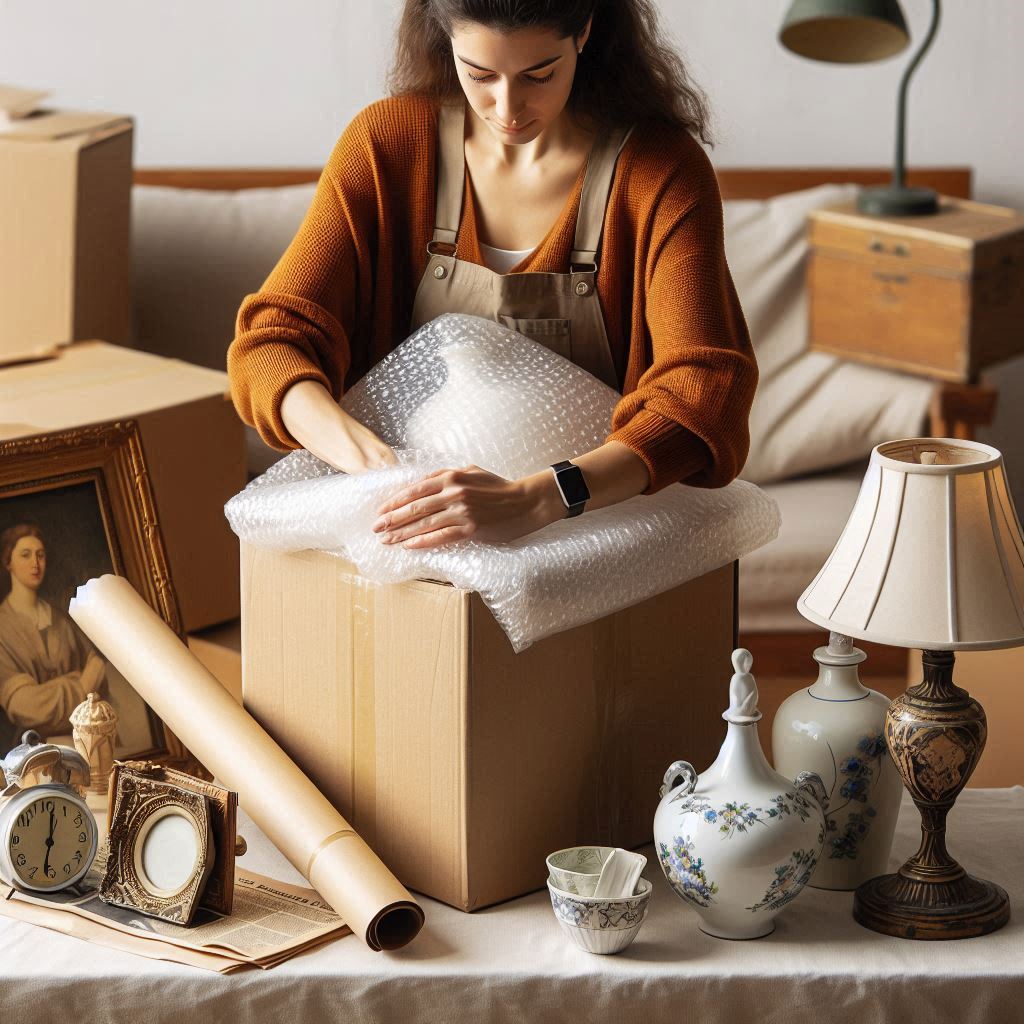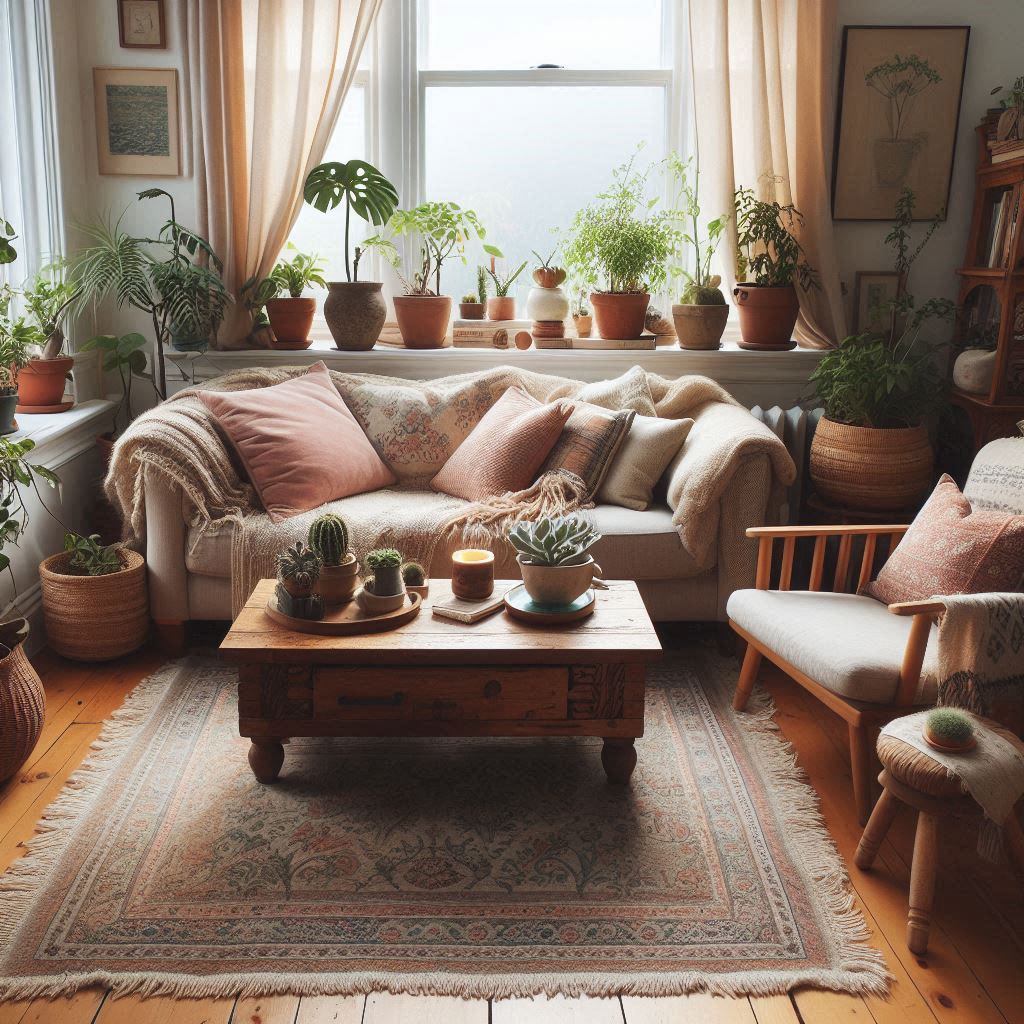Table of Contents
So, you’ve got some home decor lying around that’s not getting the love it deserves. Maybe, you’re sprucing up your living space with some new styles, or perhaps those vintage finds don’t quite fit your current vibe. Whatever the case, turning these decor pieces into cash could be just what you need.
Selling gently used home decor isn’t just about making a little extra money, though that’s a definite perk. By reselling your items, you’re giving someone else the opportunity to own something unique without the hefty price tag of buying new. You’d be surprised how many folks out there are on the hunt for something that tells a story, and your preloved decor fits the bill perfectly.
Let’s think bigger, though. Every item you sell is one less piece in a landfill. It’s an eco-friendly choice! The world is moving towards sustainability, and rehoming your decor is a simple contribution to that cause. You’re playing your part in a bigger picture, making the planet just a bit greener every time you sell something preloved.
Plus, selling your used decor helps you reclaim some space. Home should feel like a sanctuary, but it’s tough to achieve that when there’s clutter everywhere. Imagine opening up a room by selling that slightly worn-out bookshelf or passing on those quirky lamps to someone who’ll appreciate them more. You get a decluttered house, and they get a piece of decor with character—that’s a win-win for both.
Preparing your Home Decor for Sale

Before you list your home decor, it’s crucial to get each piece looking its best.
Giving everything a thorough cleaning.
A little elbow grease can go a long way in making your items look fresh and appealing to buyers. Dust off those knick-knacks, polish metal and wood surfaces, and make sure fabric items like pillows or curtains are stain-free and smell nice.
Understanding the condition of your decor is key.
Examine each piece closely, looking for any signs of wear and tear. It’s important to be realistic—if something’s broken beyond repair, it might be better to donate or recycle. But if it’s just gently used, you’re in prime selling territory. Authenticity is appreciated, so don’t be afraid to show a small scratch or natural patina; they often add charm to vintage pieces.
Capturing your items in the best light can make a huge difference.
Natural lighting is ideal for taking photos, so find a well-lit spot and get clear, crisp shots from multiple angles. Highlight unique features or imperfections honestly. Buyers trust listings with good photos, so make sure yours stand out.
Lastly, adding a personal touch to your preparation routine can help.
Maybe a quick DIY fix or a small reinvention, like changing out knobs on a cabinet, can reel in potential buyers looking for something fresh and different. Take a moment to appreciate your decor—you’ll be transferring that sense of style and attention to detail to someone else’s home soon.
Setting the Right Price: Maximising Profit
Pricing your gently used home decor can feel a bit like a balancing act. You want to attract buyers, but you also don’t want to shortchange yourself.
- Start by diving into a little research. Look up similar items online to see what they’re going for. Pay attention to condition, brand, or any unique features your item has that might justify a higher price.
- Market trends matter, too. If mid-century modern is all the rage, and you have a pristine teak side table from that era, you might be able to ask a bit more. Conversely, if the market’s flooded with similar items, you might need to adjust your expectations or wait for a better time to sell.
- Being open to negotiation is beneficial. Some buyers love to haggle, and setting a price slightly above your bottom line gives you room to negotiate without losing out. It’s a handy tactic to have in your back pocket and can make both parties feel they’ve gotten a fair deal.
- Supply and demand aren’t just economic buzzwords—they’re real factors in selling your decor. Have a rare item few others are selling? You might have the upper hand in pricing. On the flip side, if you’re selling something common, competitive pricing can give you an advantage in a crowded marketplace.
- Beyond this, consider how quickly you want to sell. If you’re on a tight deadline, pricing it to move with a small discount might be the best approach. Conversely, if you have the luxury of time, you could hold out for the right buyer who sees the value in what you’re offering.
Choosing the right platform for selling gently used home decor
Choosing where to sell your decor is as important as the decor itself. Each platform has its own vibe and audience, so finding the right fit will help you connect with potential buyers. Start by deciding whether to go the online route or stick to offline methods. Online sales offer a wider audience, but local transactions can save you the hassle of packing and shipping.
For those leaning towards the digital landscape, several online marketplaces are worth exploring. Websites and apps like eBay, Facebook Marketplace, and Etsy are great for unique or vintage items. These platforms provide a broader, often international, reach and come with user-friendly tools to post listings quickly.
If you’re not up for dealing with shipping and want to keep things local, garage sales or flea markets can be your go-to. These venues allow buyers to see items up close before buying. This direct interaction often leads to spontaneous sales and saves you from the logistics of mailing anything.
It’s important to think about the fees and rules that come with selling on different platforms. Some sites charge listing fees or take a percentage of your sale. Others might tax you on shipping. Taking a moment to compare these costs can save you some disappointment when all is said and done.
Each selling method has its benefits and quirks. Time is another factor—how quickly do you want to offload your items? If you’re in no rush, setting up an online store might be the way to go. But if quick turnover is the goal, a garage sale or local market display puts cash in your hand faster.
Deciding on the right platform boils down to how much effort you’re willing to put into the sale and what you expect to get out of it. Be flexible, test out different venues, and see what works best for your selling style.
Crafting a Compelling Listing
Creating a standout listing for your home decor is key to grabbing attention.
- Start with a detailed and accurate description. Buyers want to know exactly what they’re getting, so point out dimensions, materials, colour, and any distinctive features. This saves everyone time and boosts trust.
- Keywords can significantly increase visibility, ensuring your listing appears in relevant searches. Think about the words potential buyers might use and sprinkle them naturally within your description. Avoid throwing in too many buzzwords, though; clarity is more important than cramming in terms.
- Even the best items get overlooked if they lack a polished finish in their presentation. Including a clear call-to-action at the end of your listing can encourage buyers to take the next step. Phrases like ‘message for more details’ or ‘available for immediate pickup’ prompt engagement.
Photos, descriptions, and calls-to-action together shape the buyer’s purchasing journey. Putting effort into each part can lead to quicker sales and happier customers who’ll feel confident in what they’re buying.
Navigating the Negotiation Process with Buyers
Successfully navigating negotiations with buyers is crucial for closing sales effectively.
Communication
It all starts with maintaining clear and friendly communication. Be prompt in responding to inquiries, and keep your tone professional yet approachable. This fosters a positive relationship that can lead to a successful transaction.
Offers
Low-ball offers are part of the package, but they don’t need to derail your efforts. It’s all about staying cool and countering with a reasonable proposal of your own. Let buyers know you’re flexible, but also clearly state the value of your item to justify your counter-offer. This approach not only defends your price but also educates the buyer on why the item is worth it.
Secure Payment
Protecting both parties in the transaction is non-negotiable. Utilize secure payment platforms that offer buyer and seller protections against fraud. This ensures peace of mind for both you and your buyers.
Be Open and Honest
Remember, negotiations don’t always have to be nerve-wracking or end negatively. By keeping things open and honest, you create a smoother path to sealing the deal, and perhaps even fostering repeat business in the future.
Shipping and Delivery: Ensuring a Smooth Process
Nailing the shipping and delivery part is just as important as the sale itself.
First things first, you want to make sure your items are packaged securely to prevent any damage during transit. Consider using bubble wrap, packing peanuts, or crumpled paper, depending on the fragility of the decor item. A snug fit in the box prevents items from shifting around.
Choosing the right shipping option is crucial, too. Whether it’s UPS, FedEx, or the postal service, each has its own benefits regarding cost, speed, and reliability. Adding insurance for more valuable pieces can save you from potential headaches if something goes awry.
Sometimes, offering DIY delivery might be feasible, especially for larger items or if the buyer is close by. Discuss this option upfront and make sure delivery times and expectations are clear. It can save shipping hassles and also provide a more personal touch to the transaction.
Alternatives like local courier services might offer door-to-door options that are convenient for both you and the buyer. These services often provide tracking, ensuring both parties are in the loop from dispatch to delivery.
Ensuring a seamless delivery process doesn’t just end with packaging and shipping. Keeping the buyer informed about shipment status builds confidence and makes for a smoother transaction all around.
After-sale Practices: Building a Reputation
Once the sale concludes, there are still a few steps to wrap things up smoothly while setting yourself up for future success. One of the best ways to leave a lasting impression is by pursuing customer feedback.
- Requesting a review shows you care about the buyer’s experience and allows potential customers to trust your seller profile.
- Handling any possible returns or refunds professionally is essential. If a buyer isn’t satisfied, addressing their concerns promptly can turn a possible negative outcome into an opportunity to enhance your credibility. Approach each issue with an open mind, and aim to resolve conflicts amicably.
- Your reputation can benefit significantly from keeping communication channels open. Follow up occasionally with buyers to ensure satisfaction with their purchase. This simple gesture can foster positive relationships and encourage repeat business.
Leverage successful sales as a launchpad for future opportunities. Happy buyers might become repeat customers or refer others to you, which means more potential sales. Establishing a solid reputation now pays dividends later, transforming casual transactions into a steady stream of customers.
Interesting read:
DIY Home Decor With Thrifted Items.
Best Online Platforms To Shop Second Hand Home Decor.
Repurposing Old Furniture: Creative And Sustainable Ideas.
Kay,
secondlifeloot.com.

